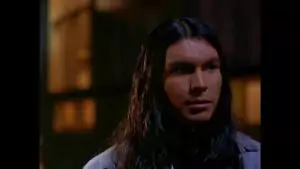 Crash is a drama film produced in the United States that premiered at the Toronto International Festival on September 10, 2004. The film’s main theme is racial and ethnic stereotyping, prejudice, and discrimination—all of which are still present in modern American society. The film was produced and directed by Paul Haggis, and is based on a personal biographical experience of the director being carjacked outside a video store in 1991. The director assembled a celebrity cast on the set, including Ryan Phillippe, Sandra Bullock, Terrence Howard, Don Cheadle, Matt Dillon, Chris “Ludacris” Bridges, Brandon Fraser, Michael Peña, Jennifer Esposito, and many other well-known actors.
Crash is a drama film produced in the United States that premiered at the Toronto International Festival on September 10, 2004. The film’s main theme is racial and ethnic stereotyping, prejudice, and discrimination—all of which are still present in modern American society. The film was produced and directed by Paul Haggis, and is based on a personal biographical experience of the director being carjacked outside a video store in 1991. The director assembled a celebrity cast on the set, including Ryan Phillippe, Sandra Bullock, Terrence Howard, Don Cheadle, Matt Dillon, Chris “Ludacris” Bridges, Brandon Fraser, Michael Peña, Jennifer Esposito, and many other well-known actors.

✅ AI Essay Writer ✅ AI Detector ✅ Plagchecker ✅ Paraphraser
✅ Summarizer ✅ Citation Generator
The film takes place in Los Angeles, where eight different stories are developed over a two-day period. There is the story of a Persian immigrant, who struggles to protect his small shop from burglars; an African-American Hollywood director and his wife, who have to put up with sexual harassment by a racist policeman; a district attorney and his wife, who are carjacked by two African-American teenagers; a poor Hispanic locksmith, who lives in an unsafe neighborhood and returns home to find his small daughter hiding under the bed because of the gunshots outside, as well as some other interrelated stories.
The plot of the film is rather unusual since it revolves around various characters that seem to be unrelated to each other in any way. However, this impression slowly dissipates in the second part of the film, when viewers begin to link all the stories with each other and see the full picture behind them. There is one general topic that all the stories have in common—social and racial tensions in Los Angeles, while there are also several subtopics that are revealed in each particular story in the film: violence, immigration, deprivation, social inequality, ethnic stereotypes, anger, criminal situations, racism, and other related issues.
It is worth noting that, for most of the film, the viewer is kept in suspense and strained as the characters communicate with each other with trepidation, and at times even aggression and direct violence. The actors have successfully managed to depict their characters’ inner conflicts and struggles with their personal beliefs, as well as, social stigmas. By the end of the film, it is hard to classify any character as explicitly bad, even though there has been a lot of racism and anger expressed by some of the characters. The reason for that is because the storyline puts the characters in the kind of situations where they have to decide whether they dare to trust their intuition, in spite of some stereotypes and fears they consciously or unconsciously have, and risk their lives believing in the innate goodness of people.
For example, I was particularly struck by the story of a young police officer, played by Ryan Phillippe, who first comes across as a positive character, disgusted by the racist beliefs of his older companion. On his way home from work, the officer picks up a hitchhiker, and they start a friendly conversation, albeit with a hint of tension. However, the officer is far from being free of prejudice himself and when put into a particularly stressful situation and suspecting the African-American teenager to be a gang member and a threat to his life, this officer, unwilling to bear the risk, shoots the young man only because the latter could have presented a danger to him. The young man, in fact, was harmless in that situation and did not present any threat to the officer whatsoever. The bitter irony of the whole situation is that later, ashamed by his own cowardly and indecent act, the officer does an even more terrible deed—he dumps the body of the poor teen into a roadside ditch and drives away.
What I found particularly effective about Crash is the element of ambiguity in every character in the film, even the racist and cruel older police officer played by Matt Dillon, who courageously saves the life of the woman he humiliated the night before. At the end of the film, viewers are left in a kind of troubled reverie. Some curious viewers may even attempt to psychoanalyze the characters on a more personal level, projecting some situations from the film on their own lives and asking themselves whether they would have acted differently, and whether they are free from these obsolete and primitive stereotypes, so firmly rooted in the characters’ subconsciousness.
Even though some viewers might find it hard at first to quickly switch from one story to the other, such an approach to storytelling in my opinion is completely justified. The director obviously did a great job combining the stories in a natural and realistic manner. By the end of the film, when the stories are linked together, the viewer is able to evaluate and review them individually, and the whole social situation in general, from a more integrated perspective. With the powerful and gutsy performance of the celebrity cast, strong and moving life stories and the whole atmosphere of sharp, cruel yet captivating dramatic twists in every story portrayed, Crash is brilliant in its profound realism and pervasive depth.
The film has received generally positive reviews and was a box office success. It was nominated for six Academy awards in 2006 and won three of them: for best picture, best editing, and best original screenplay. The film currently has a score of 76% positive reviews on the website Rotten Tomatoes and 8.0 on IMDb (Internet Movie Database).
Crash is definitely a movie worth seeing, especially because it is essential to be aware of and acknowledge those social issues that are the focus of the film. Even though it is quite possible that some viewers might not agree with the director’s view on the modern-day American big-city social and cultural peculiarities, I am rather positive that any audience of twenty-five years and up will find some of the portrayed scenarios to be topical problems of today’s America. The least this movie can do is give some food for thought and some reasons to take an extrinsic look at our own stereotypes and inflexible beliefs, and possibly reconsider them, like some characters in the movie did.
Follow us on Reddit for more insights and updates.




Comments (0)
Welcome to A*Help comments!
We’re all about debate and discussion at A*Help.
We value the diverse opinions of users, so you may find points of view that you don’t agree with. And that’s cool. However, there are certain things we’re not OK with: attempts to manipulate our data in any way, for example, or the posting of discriminative, offensive, hateful, or disparaging material.